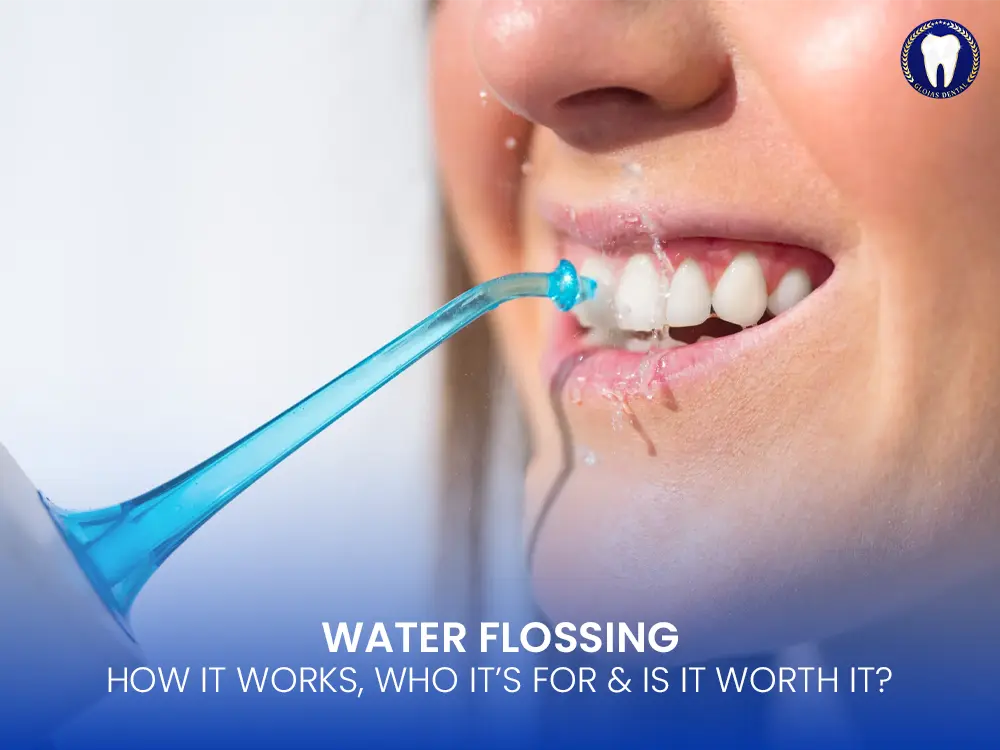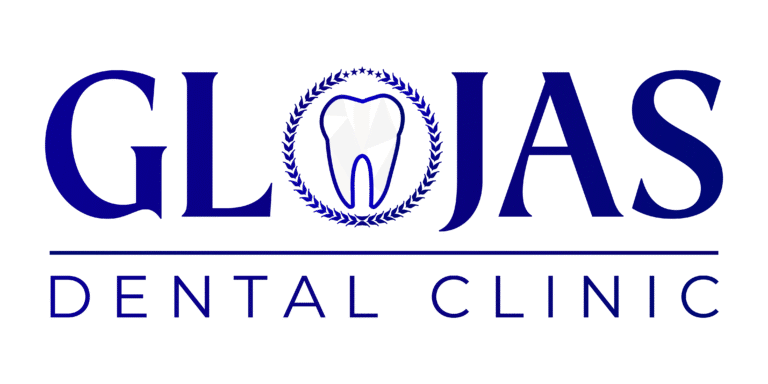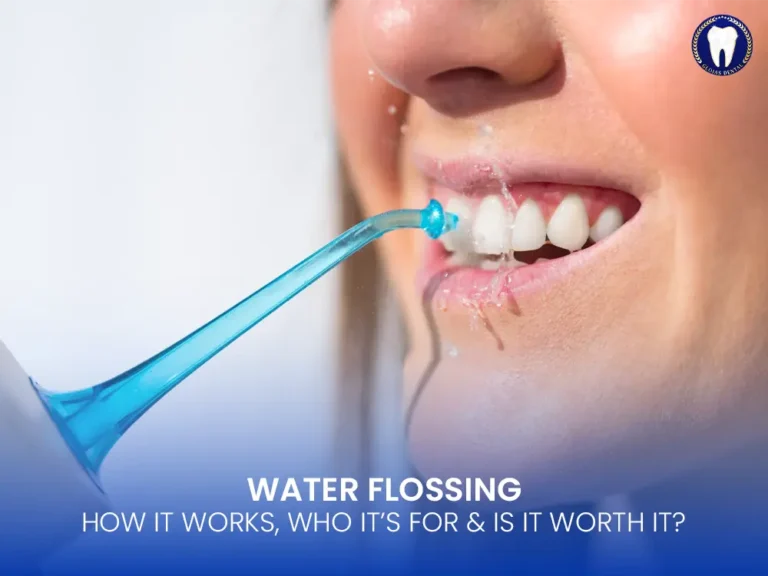Water flossing, also known as oral irrigation, is an increasingly popular dental hygiene method that uses a pressurized stream of water to remove food debris and plaque between teeth and below the gumline. It’s especially useful for those who struggle with traditional flossing or have dental appliances like braces, implants, or bridges.
In this guide, we’ll explain how water flossing works, its pros and cons, and whether dentists recommend it as part of your daily routine.
What Is Water Flossing?

Water flossing is the process of using a water flosser device (like Waterpik or Philips Sonicare AirFloss) to clean between teeth. The device sprays a steady or pulsed jet of water that dislodges food particles and disrupts plaque along the gumline.
Water flossers can be cordless or countertop units and come with adjustable pressure settings and interchangeable tips for different oral needs.
Benefits of Water Flossing
Water flossers offer several unique advantages over traditional string floss:
✅ Gentler on gums, especially for people with sensitivity or gum recession
✅ Great for braces, bridges, and implants
✅ Removes plaque in hard-to-reach areas
✅ Reduces bleeding and inflammation in people with gingivitis
✅ Easy to use for people with arthritis or dexterity issues
Water flossing is also less technique-sensitive, making it more user-friendly for beginners or children.
Water Flosser vs. Traditional Floss: Which Is Better?
| Feature | Water Flossing | String Floss |
|---|---|---|
| Gum sensitivity | Gentler | May cause irritation |
| Braces & Implants | Highly effective | Difficult to maneuver |
| Manual skill required | Minimal | High (must wrap and angle well) |
| Effectiveness on plaque | Very good (esp. below gumline) | Excellent for tight spaces |
| Portability | Less portable (cordless exists) | Highly portable |
Conclusion: Water flossing is not necessarily a complete replacement but can be an excellent supplement or alternative, particularly for orthodontic or periodontal cases.
Who Should Use a Water Flosser?
Water flossers are ideal for people who:
Wear braces or aligners
Have dental implants or bridges
Suffer from gum disease or gingivitis
Have limited dexterity (e.g. elderly or arthritic hands)
Experience bleeding or irritation from string floss
Prefer a faster, easier method for daily cleaning
How to Use a Water Flosser (Step-by-Step)
Fill the reservoir with lukewarm water
Select the right tip (orthodontic, classic, plaque seeker)
Lean over the sink and place the tip in your mouth
Turn on the device and aim the stream at the gumline
Glide the tip along the gumline and between teeth
Empty the tank and rinse the device after use
Use daily, ideally before or after brushing. Most sessions take 1–2 minutes.
Are There Any Downsides?
Water flossers are safe for most people, but consider:
💧 Cost – Higher initial price than string floss
🔌 Bulky – Some models are not travel-friendly
⚠️ Not a substitute for brushing – Still need to brush twice daily
💡 Learning curve – May splash water if not positioned correctly
Dentist Opinions: Is Water Flossing Effective?
According to the American Dental Association (ADA), water flossers that meet performance criteria are effective at reducing gingival bleeding and plaque. Many dentists recommend them in combination with brushing for patients who need gentler, deeper cleaning.
At Glojas Dental Clinic, we often recommend water flossing to:
Orthodontic patients
Post-surgical implant patients
Individuals with gum inflammation
Best Water Flosser Brands to Consider
If you’re planning to buy a water flosser in Malaysia, consider these options:
Waterpik Ultra / Cordless Advanced – ADA-accepted and feature-rich
Philips Sonicare AirFloss Ultra – Quick, burst-mode cleaning
Oral-B OxyJet – Combines microbubbles with water jet
Panasonic Cordless Water Flosser – Travel-friendly and compact
Prices range from RM 200 – RM 600+, depending on model and features.
Frequently Asked Questions (FAQs)
1. Is water flossing better than string floss?
It depends on your oral needs. For people with braces or sensitive gums, water flossers are more practical. For tight spaces, string floss may be more precise.
2. Can water flossers replace regular flossing?
They are a great alternative for many users, but dentists often recommend using both for optimal plaque control.
3. Is it safe for children?
Yes, under adult supervision. Choose models with low-pressure settings and simple controls.
4. Can water flossers help with bad breath?
Yes. By removing trapped food and bacteria, they can improve oral freshness and gum health.
5. How often should I use a water flosser?
Use it once daily, ideally at night, to keep your gums healthy and free from buildup.
Final Thoughts: Should You Try Water Flossing?
If you’re looking for a gentler, more convenient way to floss, water flossing is worth trying. It’s particularly helpful for people with braces, implants, or gum issues, and it can significantly improve your overall oral hygiene when used correctly.
Always remember: brushing + flossing (string or water) = complete oral care.
Visit Glojas Dental Clinic for Gum & Hygiene Care
Need help choosing the right oral hygiene tools? Visit Glojas Dental Clinic in Kuala Lumpur for a personalized oral health assessment. We provide professional cleaning, gum care, and post-orthodontic hygiene plans tailored to your needs.
📍 B-2, Glomac Galleria, 06, Jalan 26a/70a, Desa Sri Hartamas, 50480 Wilayah Persekutuan, Wilayah Persekutuan Kuala Lumpur
📞 012-260 0544
🌐 www.glojasdental.com


